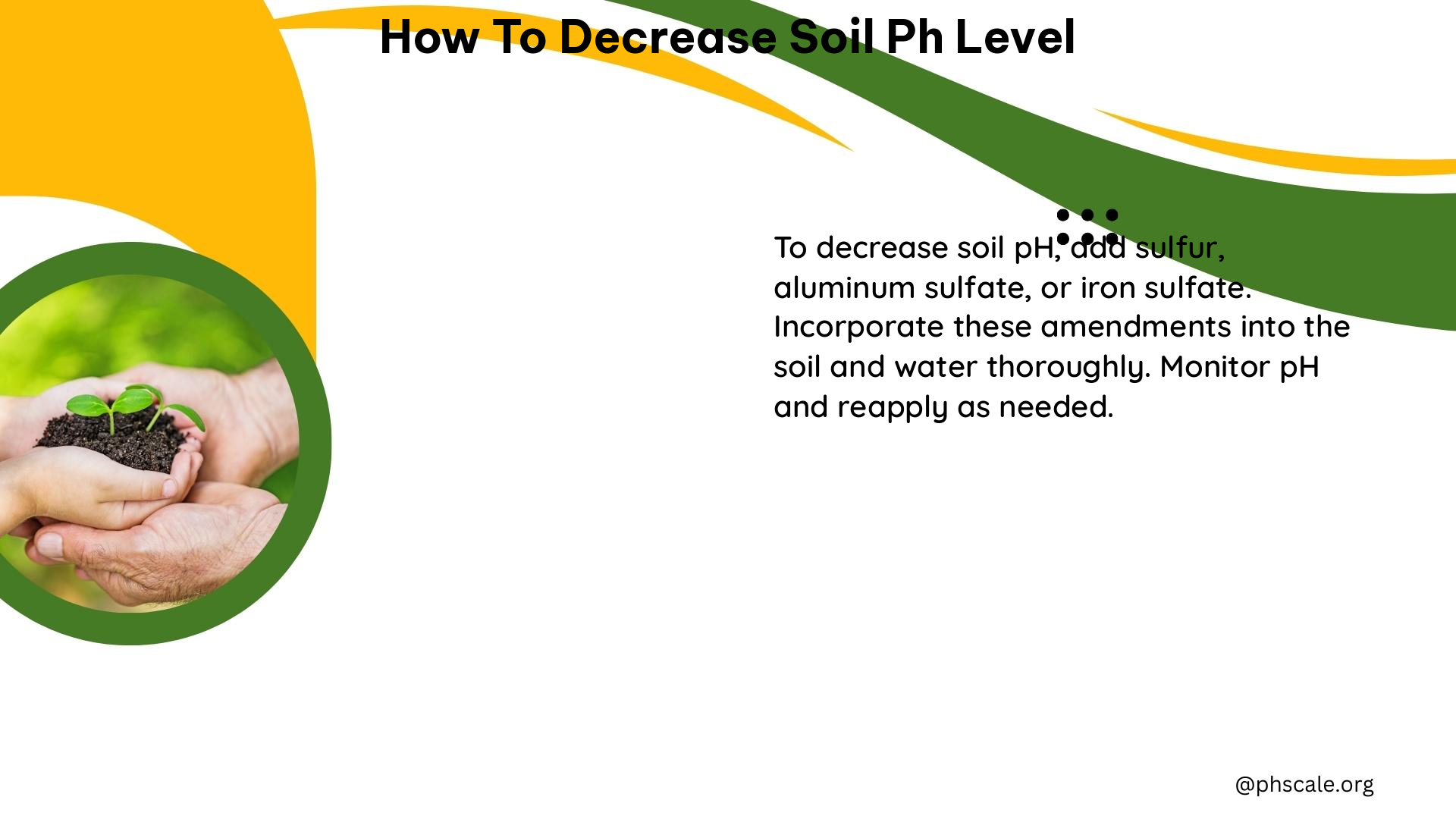Maintaining the optimal soil pH level is crucial for the health and growth of plants. If your soil is too alkaline, it can hinder the availability of essential nutrients, leading to stunted growth and poor plant performance. Fortunately, there are several effective methods to decrease soil pH and create a more acidic environment for your plants. In this comprehensive guide, we’ll explore the step-by-step process to lower soil pH levels and ensure your garden thrives.
Measuring Soil pH
Before attempting to lower the soil pH, it’s essential to determine the current pH level. This can be done using a soil test kit or by sending a soil sample to a local laboratory. Knowing the exact pH value will help you choose the appropriate methods and the correct amount of amendments to achieve the desired pH range.
Lowering Soil pH

1. Add Elemental Sulfur
Elemental sulfur is one of the most effective and commonly used methods to decrease soil pH. Apply elemental sulfur (90 or 99% sulfur material) annually at a rate of 6 to 10 pounds per 1000 square feet of area. As the sulfur oxidizes in the soil, it forms sulfuric acid, which lowers the pH.
2. Use Acidifying Fertilizers
Fertilizers containing ammonium, such as ammonium sulfate, urea, and ammonium nitrate, can help lower soil pH over time. These fertilizers release acidic compounds as they break down in the soil, gradually reducing the pH.
3. Incorporate Organic Matter
Adding organic matter like peat moss or sphagnum peat moss can help lower soil pH. These materials are highly acidic and can reduce the pH levels. However, the effect may be temporary and less effective than other methods.
4. Apply Aluminum Sulfate
Aluminum sulfate is another effective material for lowering soil pH. It acts faster than elemental sulfur and can be used safely by homeowners. Apply about 4 to 6 pounds of aluminum sulfate per plant to decrease soil pH by about one unit.
5. Use Sulfuric Acid
Sulfuric acid can be used to quickly lower soil pH, but it is dangerous and not recommended for home gardeners. Professionals may use it to reduce soil pH around large, established trees.
Tips and Precautions
- Test Soil pH Regularly: Monitor soil pH levels regularly to ensure the desired pH range is achieved.
- Avoid Over-Acidification: Be cautious not to over-acidify the soil, as this can harm plants.
- Use Distilled Water: When testing soil pH, use distilled water to avoid any pH influences from tap water.
- Gradual Changes: Make gradual changes to soil pH to avoid shocking plants.
- Choose pH-Tolerant Plants: Select plants that are tolerant of the existing soil pH to minimize the need for pH adjustments.
Specific Plant Requirements
Blueberries and Azaleas
These plants require a pH of around 4.5, which is acidic. Use elemental sulfur, aluminum sulfate, or acidifying fertilizers to achieve this pH range.
Common Misconceptions
Vinegar and Cider
Using vinegar or cider to lower soil pH is not effective and should be avoided.
Pine Needles and Coffee Grounds
These materials do not significantly lower soil pH and should not be relied upon for this purpose.
References
- Solutions to Soil Problems II. High pH – USU Extension
-
https://extension.usu.edu/yardandgarden/research/solutions-to-soil-problems-ii-high-ph
-
How to Lower Soil pH in 4 Easy Steps – The Spruce
-
https://www.thespruce.com/how-to-lower-ph-in-soil-7093463
-
How To Lower Soil pH Or Raise Soil pH – Epic Gardening
-
-
Reducing Soil pH – Wisconsin Horticulture
-
-
Lowering Soil pH Level – Reddit
- https://www.reddit.com/r/gardening/comments/z7qazc/lowering_soil_ph_level/
